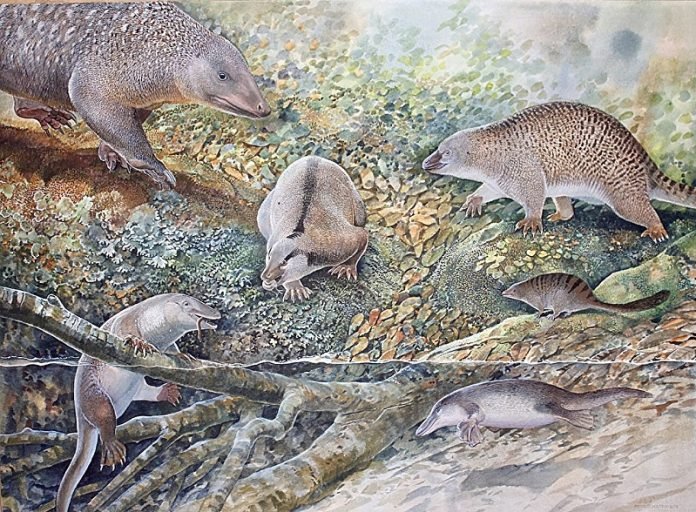
A team of Australian scientists has unearthed evidence of an “Age of Monotremes,” revealing that Australia was once home to a diverse range of egg-laying mammals.
These findings were published today in the Alcheringa: An Australasian Journal of Palaeontology by researchers from the Australian Museum (AM), Museums Victoria, and the Australian Opal Centre.
The discovery was led by Professor Tim Flannery, Honorary Associate of the Australian Museum, and Professor Kris Helgen, Chief Scientist and Director of the Australian Museum Research Institute (AMRI).
They found opalized jaw fossils in the Lightning Ridge opal fields of New South Wales, dating back to the Cenomanian Age of the Cretaceous Period, between 102 million and 96.6 million years ago.
Professor Flannery explained that these findings show Australia was home to a variety of monotremes 100 million years ago, far more diverse than the platypus and echidna we know today.
“Discovering these fossils is like uncovering a whole new civilization,” he said.
Professor Helgen highlighted the significance of the three new species discovered. One of these, Opalios splendens, has features similar to both the platypus and the echidna. “Opalios splendens occupies a unique place in the evolutionary tree, before the common ancestor of today’s monotremes,” he explained.
“It has characteristics of the earliest known monotremes, but also hints at features found in modern echidnas and platypuses.”
The research reveals that, historically, monotremes evolved from having many teeth to becoming almost toothless. For instance, Teinolophos trusleri, the oldest known monotreme from Victoria, had numerous teeth 130 million years ago.
However, by 100 million years ago, some monotremes had fewer teeth, while today’s echidnas have none, and adult platypuses have only rudimentary molars in juveniles.
Professor Flannery suggested that platypuses might have lost their teeth due to competition with the Australian water rat, which arrived about 2 million years ago. “This competition may have pushed platypuses to adapt to softer, slipperier food, processed with the leathery pads they use today,” he said.
Dr. Matthew McCurry, Curator of Palaeontology at the Australian Museum, emphasized the importance of these discoveries. “Finding new fossils helps us understand where these animals lived, their appearance, and how environmental changes influenced their evolution,” he said.
“This discovery adds over 20% to the known diversity of monotremes, making the Cenomanian Lightning Ridge fauna the most diverse monotreme assemblage on record.”
Co-authors Dr. Thomas Rich and Professor Patricia Vickers-Rich from Museums Victoria Research Institute noted the complexity of the monotreme family tree.
“These new species suggest that the family tree of egg-laying monotremes is far more intricate than previously thought,” Dr. Rich said. “Ongoing fieldwork continues to expand our understanding of life’s evolution over time,” added Professor Vickers-Rich.
The fossils were discovered by Elizabeth Smith and her daughter Clytie from the Australian Opal Centre in Lightning Ridge. “Opal fossils are rare, and opalized monotreme fossils are even rarer,” Smith said. “These specimens show that 100 million years ago, there were more monotremes at Lightning Ridge than anywhere else on Earth.”
In summary, this discovery reveals that long before Australia became known for marsupials, it was dominated by diverse and unique egg-laying mammals. This ancient era, now dubbed the “Age of Monotremes,” highlights the rich evolutionary history of Australia’s wildlife.
Source: Taylor & Francis.



